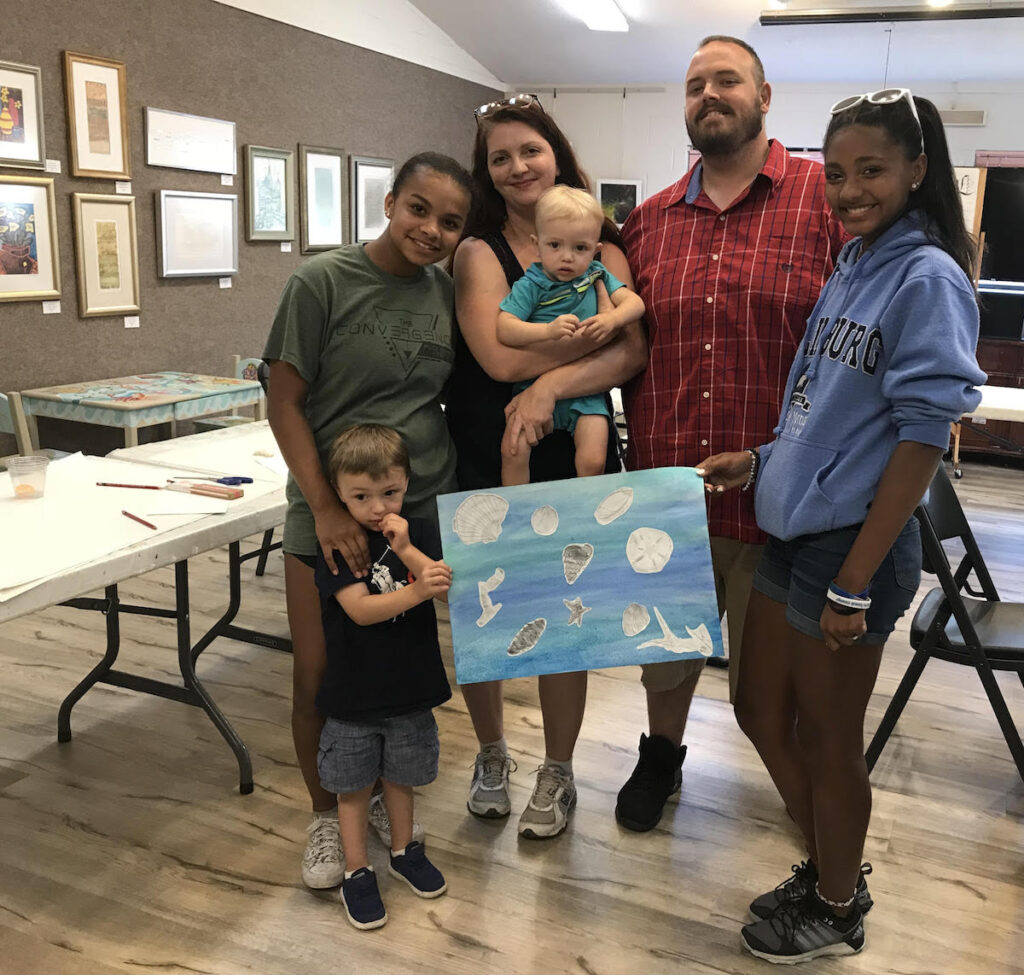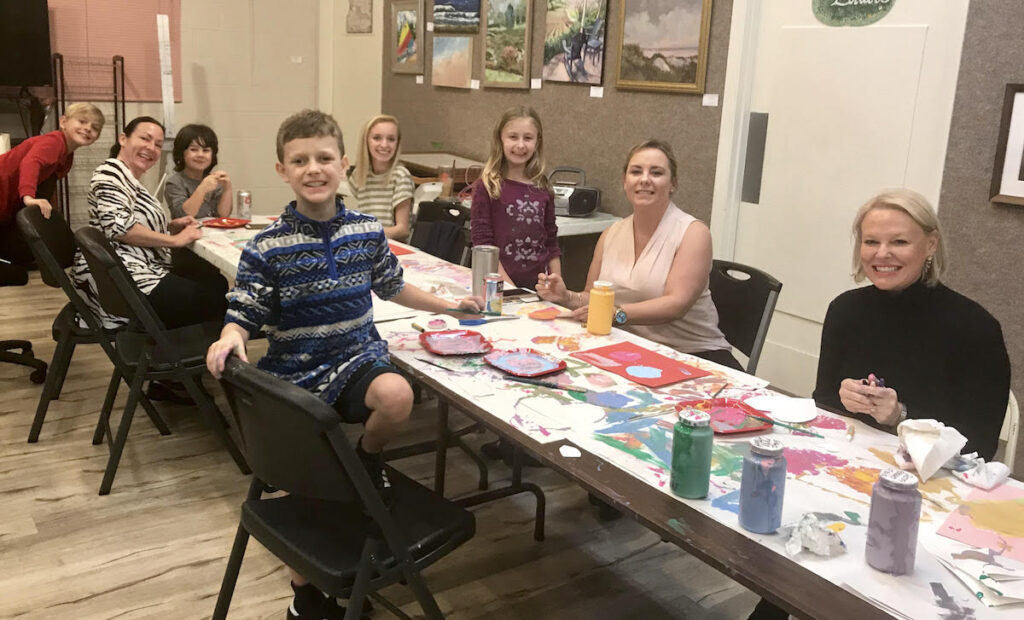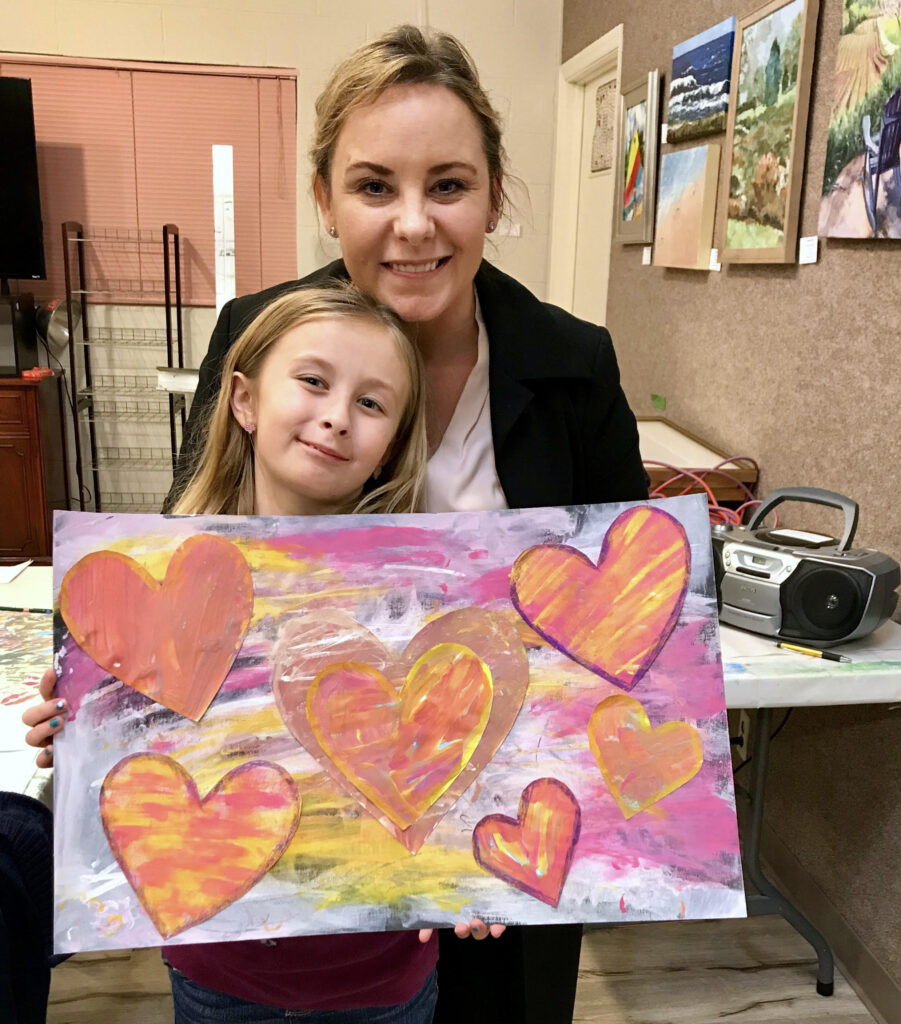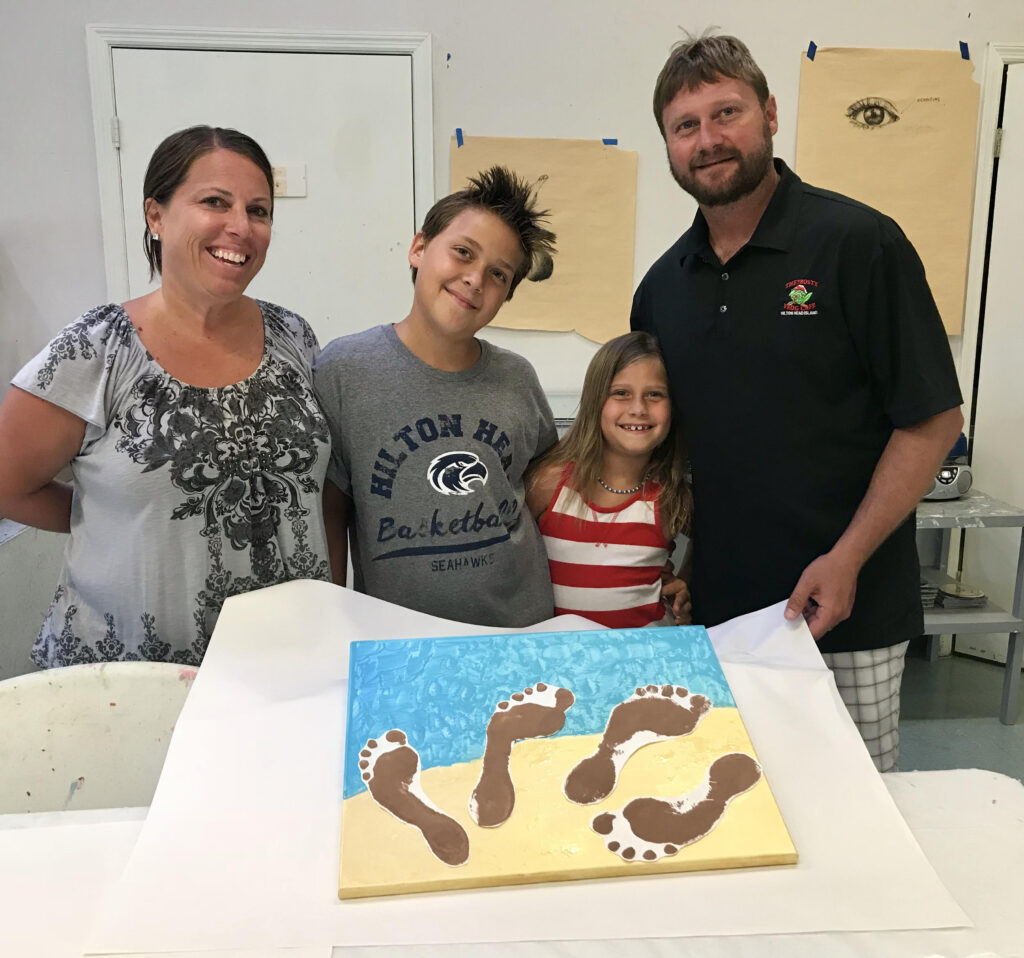One of the best ways to advocate for your art program is to allow families to see, first-hand, the joy the arts bring to their children. Creating experiences where this is possible is a wonderful way to share your teaching philosophy and build support. It’s definitely something worth doing at least once a year.
However, planning an event like this can seem overwhelming. There are a lot of moving parts. Over the years, I’ve gathered some tips to make everything run smoothly. I’d love to share them with you today.
Here are 6 tips for hosting a Family Fun Art Night in your community.

1. Start with a theme.
The key to any successful activity lies in the planning and prep. One way to organize is to start with a theme. Having a theme is a nice way to tie everything together and make sure your planning stays on track. When choosing a theme consider the age of your students, their interests, your location, and anything else you think may get people excited.
Here are a few ideas my students and I have found to be successful:
- heART Night
- Beach Night
- Art History Night
- Art Centers Night

2. Get your students involved.
The more ownership your students have over the program, the more excited they will be to share with their families and attend. The best way to do this is to get them involved from the very beginning. Ask your students which art activities they would like to share at the event. Have them help brainstorm the best ways to teach these techniques to the attendees.
You might even consider having students teach the lessons. After all, think of everything they have learned in your classroom. Seeing how they present the information to others can be a wonderful assessment tool as well.
3. Don’t forget to advertise.
The sooner you begin to advertise the event; the more community members will attend. It’s so frustrating to plan a large event and end up with a relatively small turnout. Often, this situation can be attributed to a short turnaround.
Families are extremely busy these days. Giving them time to plan is imperative. Schedule your event as far ahead as possible and start advertising months in advance. You’re much more likely to get a full house that way!
Here are a few ways you can advertise this event with your community:
- Put a note in the school newsletter.
- Have students create and bring home personalized, hand-made invitations.
- Send emails.
- Create flyers or hand-made posters and hang them around the school and in the wider community.
- Take out an ad in the local newspaper.
- Contact your local news station to do a story about the event.
4. Choose step-by-step lessons familiar to students.
Choosing step-by-step lessons students have some experience with will make for a successful event. Students will be able to confidently share about the materials and procedures with their families, and family members will walk away with some beautiful creations. As I mentioned earlier, when you have students think about the objectives, materials, and procedures, they begin to understand all that goes into the designing of a lesson. Let your students design the lessons they wanted to share with their family members!

5. Think through your setup carefully.
Think about where you want to hold your event. Depending on how many people you think may attend you might choose the cafeteria, library, art room, or other location. No matter where you choose, it’s important to be organized.
Have your students consider how many people are coming and the supplies they will have to prepare. For example, when we held “heART night,” families worked on painted hearts. Students figured out they had to have brushes, cardboard, and paint set up.
However, they also had to consider other things. How would people wash brushes? Could people take the paintings home wet? What if people wanted to add more to their hearts? After thinking through these questions, students added water buckets, hair dryers, scissors, glue and poster board to their materials list. They also decided to include oil pastels and crayons for extra embellishing.
Finally, they had to consider how to organize all of these supplies so we could get the lesson completed in fifteen-minute sessions.

6. Don’t forget about cleanup!
Finally, make sure your students thoroughly think about cleanup. We ran our art night by having groups of people rotate through. So, students had to figure out how to clean up after each group so the following group could start right away. Designating workers in each area worked well. However, your setup and cleanup systems may look different depending on how you and your students decided to organize.
Since I’ve “retired-ish,” I now enjoy teaching at our local Art League. I started teaching adult drawing classes and teach a few youth classes as well. One day, I started to consider having both adults and kids come and create art together. I remembered how successful our family fun art nights were and reinvented the experience. Now, once a month, we invite families to come and make art together.
The results have been wonderful. Families are so busy, they aren’t taking the time to have creative experiences together. These events have been beyond successful, and as the news spreads, they are filling up quickly! We might have to consider several classes a month. This is always a great problem to have as we continue to share the value and fun involved in making art together.
Have you held any family art nights at your school?
How do you advocate for your program within your community?
Magazine articles and podcasts are opinions of professional education contributors and do not necessarily represent the position of the Art of Education University (AOEU) or its academic offerings. Contributors use terms in the way they are most often talked about in the scope of their educational experiences.





